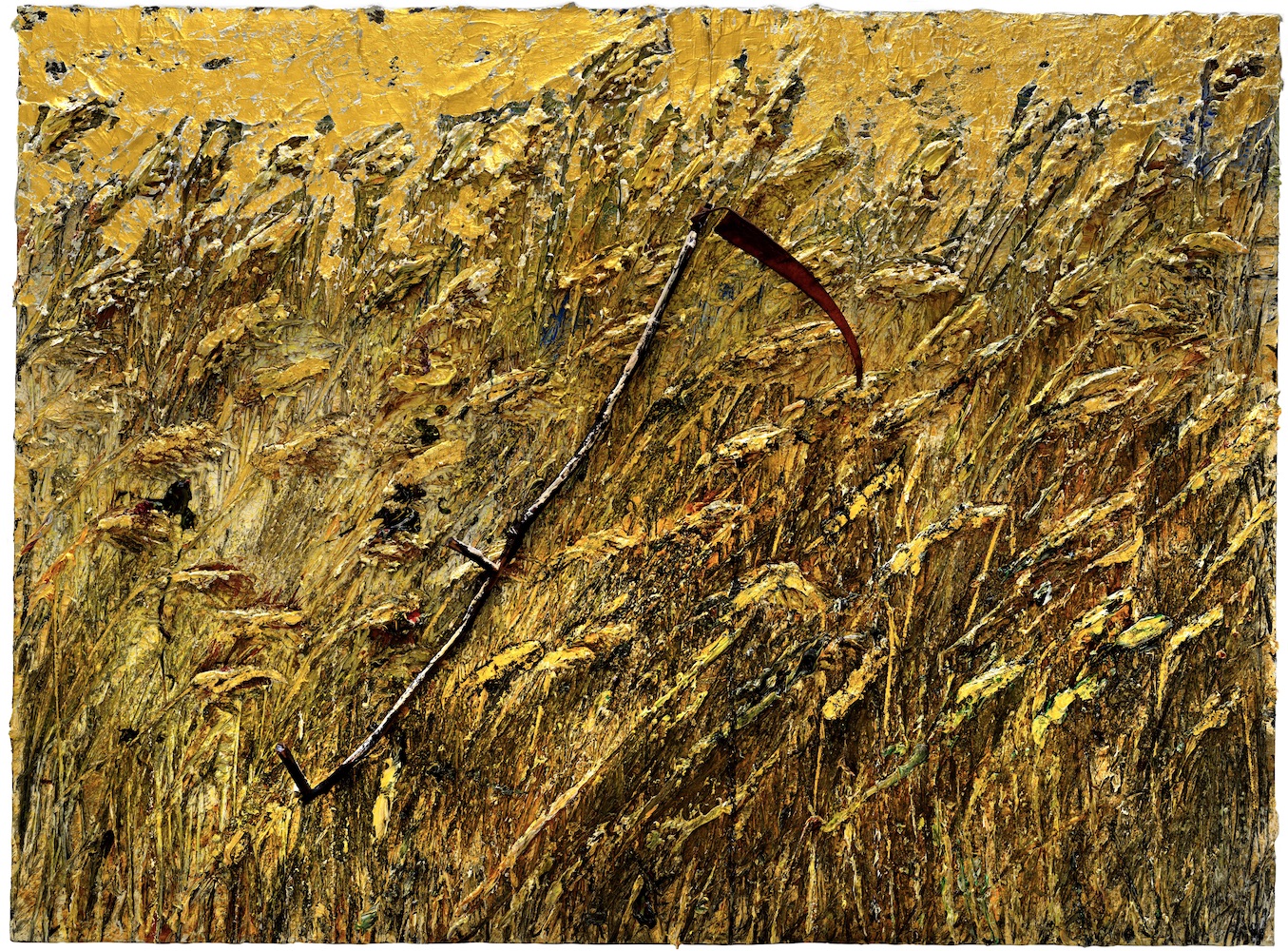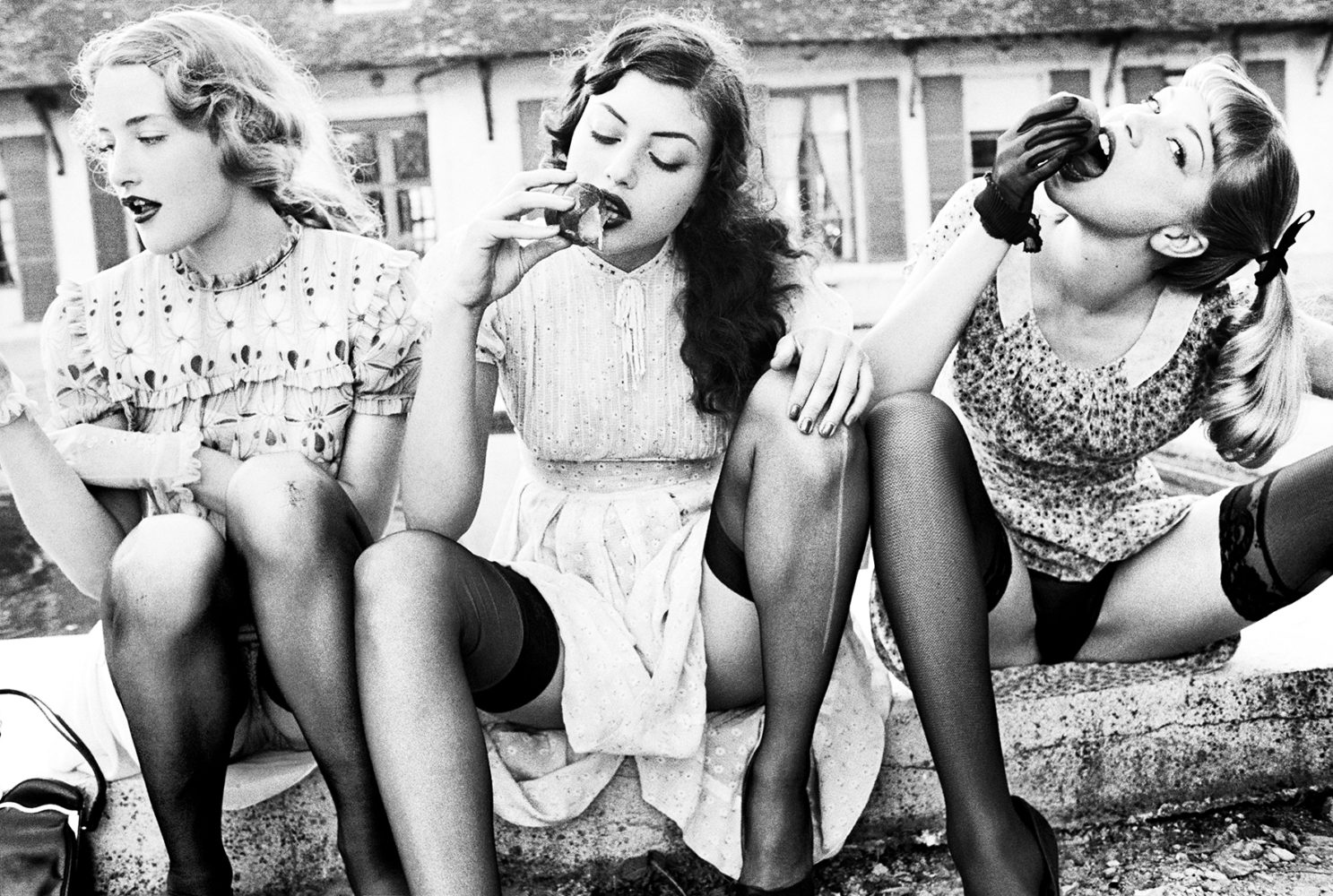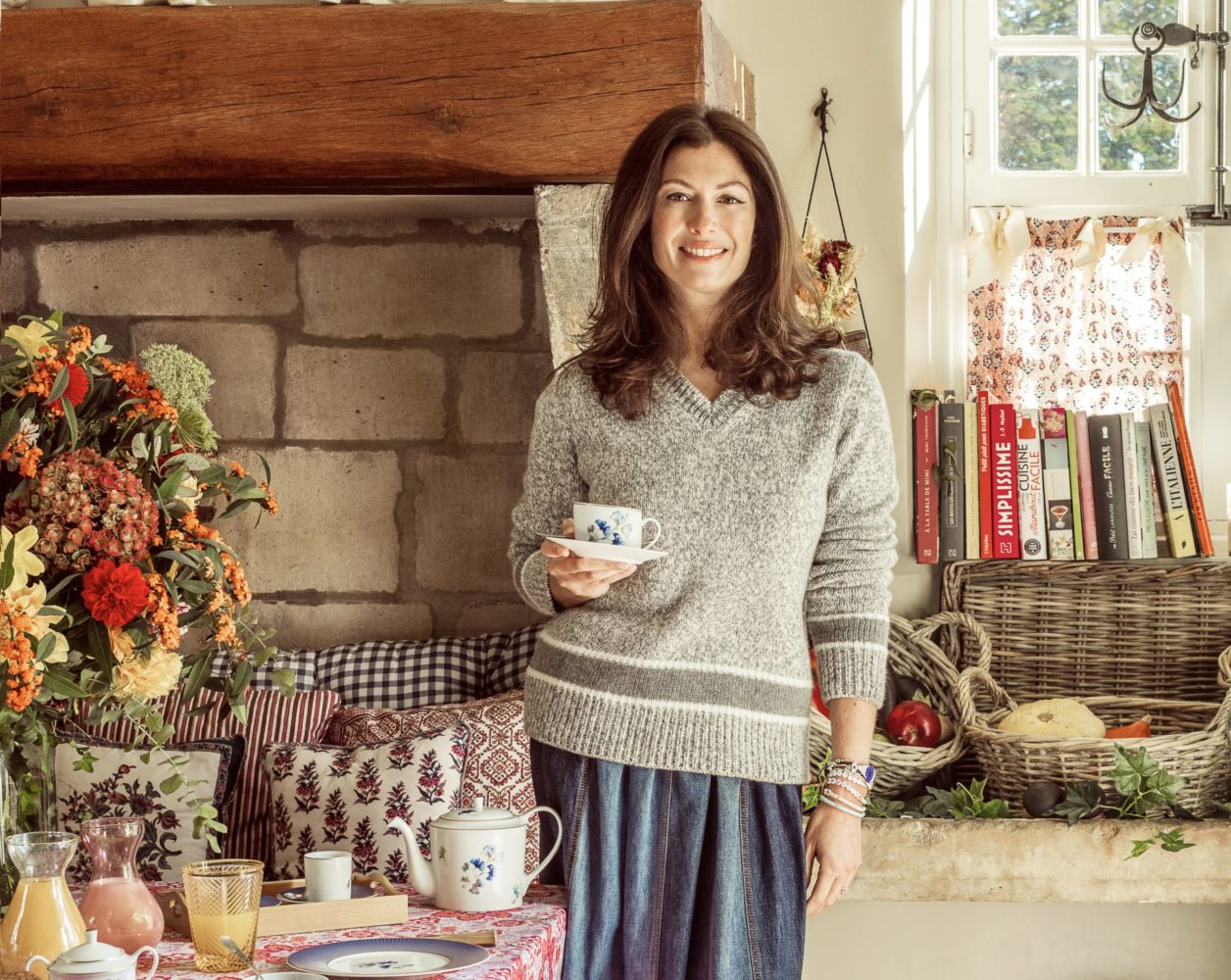When Ditte and Nicolaj Reffstrup met on a dance floor 17 years ago, each was attracted to the other’s independent, free-flowing nature. At first, they were a self-proclaimed odd couple, coming from opposite professions. Ditte worked in fashion, and Nicolaj was immersed in technology and concerned with climate change. As their relationship grew to include both fields, so did their brand.
In 2009, the couple took over GANNI—a fashion label founded by a gallery owner just nine years before, which then only made cashmere sweaters. Much has changed over the past decade for the brand. As it makes its way across the globe, GANNI surreptitiously translates the Copenhagen girl—one who rides her bike to the harbor, throws off her floral GANNI dress, and takes an afternoon swim for fun.
Whitewall spoke with the Reffstrups to hear about how they’re designing sustainably and what new approaches the pandemic has forced them to consider.
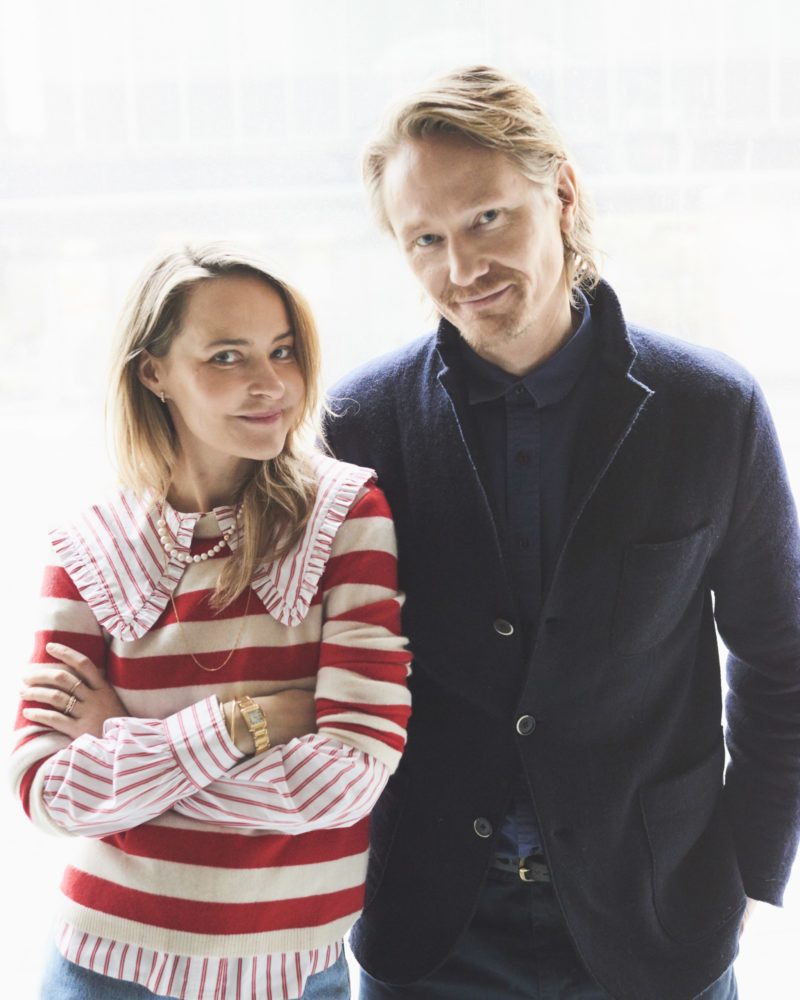
Portrait of Ditte and Nicolaj Reffstrup by Oscar Meyer.
WHITEWALL: GANNI was founded in 2000 by a gallery owner, and you started running the company in 2009. Ditte, you mentioned that at the time you were a buyer, that the brand was not really a label then, and that the owner asked you to help because he didn’t know where to go from there. Your first piece was a floral cutout dress. How did the brand evolve from there?
DITTE REFFSTRUP: Because I was in buying for many years and had been traveling, people would always say, “Hey, you’re from Copenhagen, so you’re very androgynous.” It was either very androgynous or very bohemian, and I couldn’t recognize myself in that. And I couldn’t recognize the girls that I was inspired by, or my friends. I knew that something was missing. The world hadn’t seen the best of Scandi 2.0, if you may. So that was what I wanted to do. I wanted to do a Scandi 2.0. That was my dream.
NICOLAJ REFFSTRUP: We wanted to show the world that there was a third way—not the bohemian, not the androgynous. It was much more about colors and prints, a lot about contrast, and not being afraid of wearing a lace dress and a biker jacket.
WW: Did you feel that being based in Copenhagen had an impact on the way that you viewed your designs then? What about now?
DR: It impacts what we’re doing in so many ways I hardly know where to start. The way we go about living in Copenhagen is very convenient in a sense that you can cycle across town in 30 minutes. You cycle everywhere, you can swim in the harbor—the water is so clean that you can just jump in.
You’re very versatile in the way you dress yourself. You layer up and down; you wear a dress with sneaks and then do heels for later in the evening. In many ways, it’s also a very egalitarian society—not just in terms of income and gas, but in terms of women empowerment.
Fashion is more of a state of mind. When you see a girl or a woman, it’s not that she’s just a beauty; she just has something that immediately makes you wonder. It’s much more a state of mind than what she’s wearing. If you dress for yourself, and you feel good about yourself, that confidence is what makes people beautiful. That’s something that I’m working with. It’s a natural thing.
NR: That’s very much the Copenhagen girl. Copenhagen has been booming for the past ten years culturally. So, from a very early stage, we knew we wanted to create an international brand and reach out.
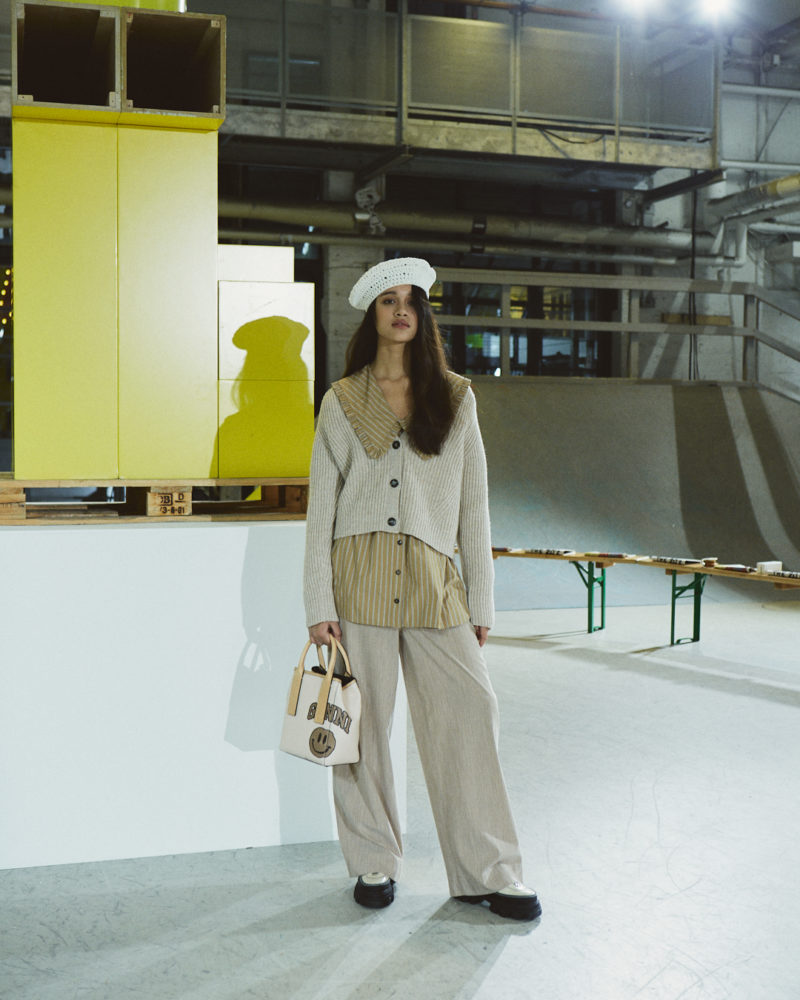
GANNI’s Fall/Winter 2020 collection, photo by Thorn Feldt, courtesy of GANNI.
WW: Can you tell us about GANNI’s efforts in sustainability?
NR: We have overarching approaches to behaving responsibly. It’s a huge project, and we have one full-time employee just doing that. It’s one of the most important contributions to our company, but it’s very difficult to communicate that to an end consumer. So, lots of back-of-the office kind of projects.
We have projects that are targeted at raising awareness, either internally or amongst our suppliers and customers—like having a vegetarian lunch, managing our CO footprint, or growing oyster mushrooms in our coffee grounds from canteens.
We know growing mushrooms won’t save the world, but it’s a very cool project, and it’s something to relate to. Our employees love it. We harvest the mushrooms every Thursday, and they look beautiful and intricate. You need to have that lighthearted approach to an otherwise very daunting project if you want to engage entire companies.
DR: When I met Nicolaj almost 17 years ago, he was talking about global warming, climate change, and how we were doomed. Honestly, I didn’t know what he was talking about. Today, it’s something we talk about every day with family, colleagues, and friends. But it was something that he brought into my life, and from the beginning, into the company. The way we’re trying to work is natural.
WW: What is your creative process like?
DR: It’s an ongoing process. It never stops. I’m thinking in colors, prints, and shapes constantly. It’s on my mind all the time and can be anything. It can be me hanging out in the garden, riding my bike, or listening to old music. It’s very much about feelings.
On top of that, I have a very good team that I’ve been working with almost since the beginning.
NR: It’s also very much a team effort. As a company, not only when it comes to creative processes but as a company culture, we’re very much about an idea win. We’re less concerned about hierarchy or titles, or who has been with the company the longest. It’s more about anybody who can come up with a great idea.
Ditte also used to play a lot of soccer, so she’s into these soccer metaphors. An example she uses all the time is, “You’re never better than the entire team.”
DR: You can never win on your own and you can never score a goal without having the teammates. That’s so important to me. Even if it’s an intern, may the best idea win. I feel like that gets us so much energy. It’s very much a team effort and very much about a gut feeling and heart.
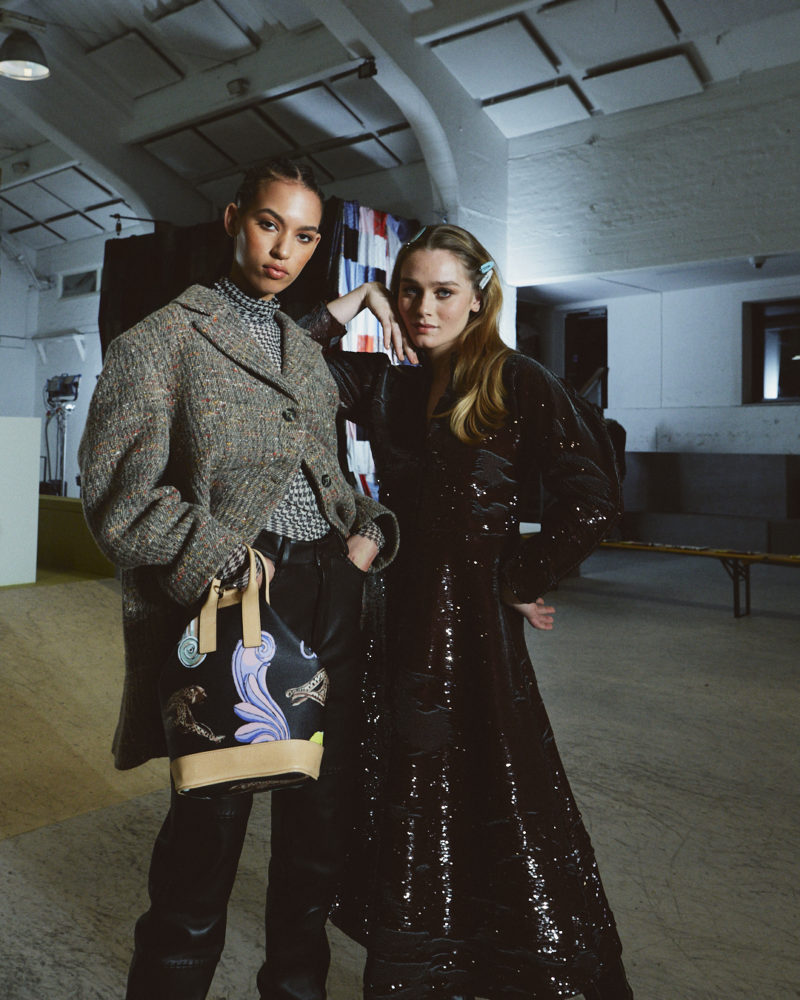
GANNI’s Fall/Winter 2020 collection, photo by Thorn Feldt, courtesy of GANNI.
WW: Can you tell us a bit about the inspiration behind the Fall/Winter 2020 collection?
DR: We were excited about looking ahead to 2020 and embracing what the new decade had in store. We are living in wild times, but we’re so hyper-connected. It’s all about using our resources as a positive power and finding that closeness and holding on to it. The collection then translated into practical pieces, all with our signature masculine-feminine contrast. With stomping boots and tailoring topped off with berets and oversized Peter Pan collars to bring the energy. There’s also a clash of ages—Victorian romance meets the realism of 2020, but clothes feel made with the intention to last.
WW: How has the pandemic impacted your views on designing for the future?
DR: In the beginning of the pandemic, it became clear to the design team that we had to look at reducing the size of the resort collection that we had just finished designing. We were all so sad we had to “kill our darlings.” But somehow it’s become a constructive process of refocusing on the core pieces that really speak the DNA of the brand. It’s kind of like making a good pasta—you just need a few really good ingredients.
WW: #GANNI202020 is a creative collective the brand started in January 2020 at Copenhagen Fashion Week. How does it encourage responsible design?
DR: I’m a collaboration freak. I find the process so uplifting—the synergy is so rewarding. Collaborating is doing what we do best, surrounding ourselves with amazing talent from near and far, growing new friendships, drawing on different perspectives from around the world. Now more than ever, we need to work together and create in new ways to find solutions. It helps you rethink, hit refresh, and find ways of doing something totally different; outsourcing and accelerating things that could otherwise have taken years to happen on our own. Like upcycling techniques and deadstock fabrics for new projects or helping move forward with a responsible material and work that across all our future collections.
WW: GANNI also participated in the Global Fashion Agenda summit in Copenhagen, which was virtually presented in October 2020. What did this entail?
NR: The focus was all about learning from the past year of disruption and looking ahead—how we move forward, redefine, and redesign the post-crisis. Seeing now as a time for reflection and radical change. I hosted a webinar at CFS+ with Stine Kirstein Junge from the UNDP to talk about our journey to creating a zero-impact collection—whether that is even possible and the challenges we are facing along the way. That project, now titled GANNI Lab, resulted in our “Software” collection—our most responsible collection to date, made entirely of recycled fabrics with 75 percent traceability across our supplier stages.
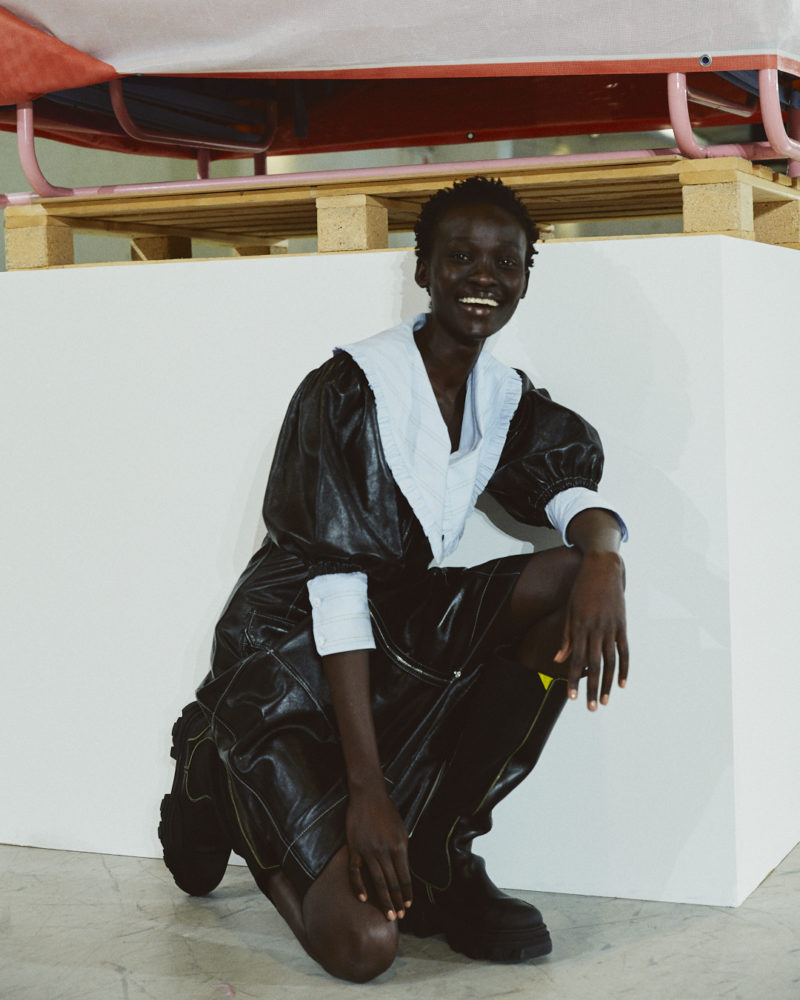
GANNI’s Fall/Winter 2020 collection, photo by Thorn Feldt, courtesy of GANNI.




